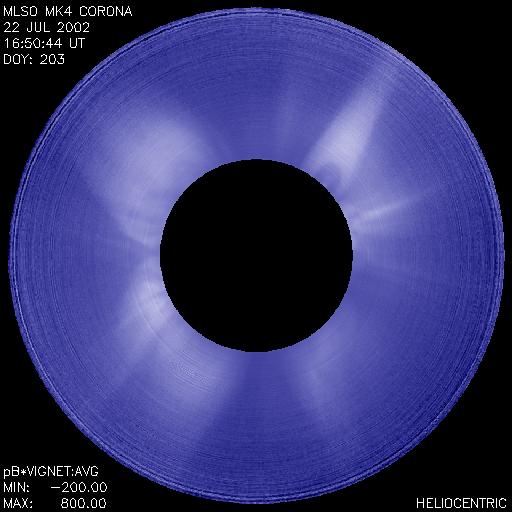
Catalogue of MLSO/Mk4 white light cavities (1998-2004)

This catalogue provides the details of analysis of 98 white light cavities, as discussed in Gibson et al., 2006 (ApJ, 2006, 641, 590 -- April 10, 2006 issue).
Abstract: Determining the state of the corona prior to coronal mass ejections (CMEs) is crucial to understanding and ultimately predicting solar eruptions. A common and compelling feature of CMEs is their three-part morphology as seen in white light observations of a bright expanding loop, followed by a relatively dark cavity, and lastly a bright core associated with an erupting prominence/filament. This morphology is an important constraint on CME models. It is also quite common for a three-part structure of loop/cavity/prominence-core to exist quiescently in the corona, and this is equivalently an important constraint on models of CME-precursor magnetic structure. These quiescent structures exist in the low corona, primarily below approximately 1.6 Rsun, and so are currently observable in white light during solar eclipses, or else by the Mauna Loa Solar Observatory Mk4 coronameter. We present the first comprehensive, quantitative analysis of white light quiescent cavities as observed by the Mk4 coronameter. We find that such cavities are ubiquitous, as they are the coronal limb counterparts to filament channels observed on the solar disk. We consider examples that range from extremely long-lived, longitudinally extended polar-crown-filament-related cavities, to smaller cavities associated with filaments near or within active regions. The former are often stable for days and even weeks at a time, and can be identified as long-lived cavities that survive for months. We quantify cavity morphology and intensity contrast properties, and consider correlations between these properties. We find multiple cases where quiescent cavities directly erupt into CMEs, and consider how morphological and intensity contrast properties of these cases differ from the general population of cavities. Finally, we discuss the implications that these observations may have for the state of the corona just prior to a CME, and more generally for the nature of coronal MHD equilibria.
- Gibson et al. (2006) paper
- Cavity list: e.g. Tables 2 + 3
- Full list of cavity days observed
- List of best cavity days (SET 1) observed: e.g. Table 1
- CMEs associated with cavities : e.g. Tables 7 + 8